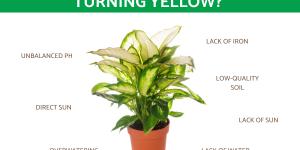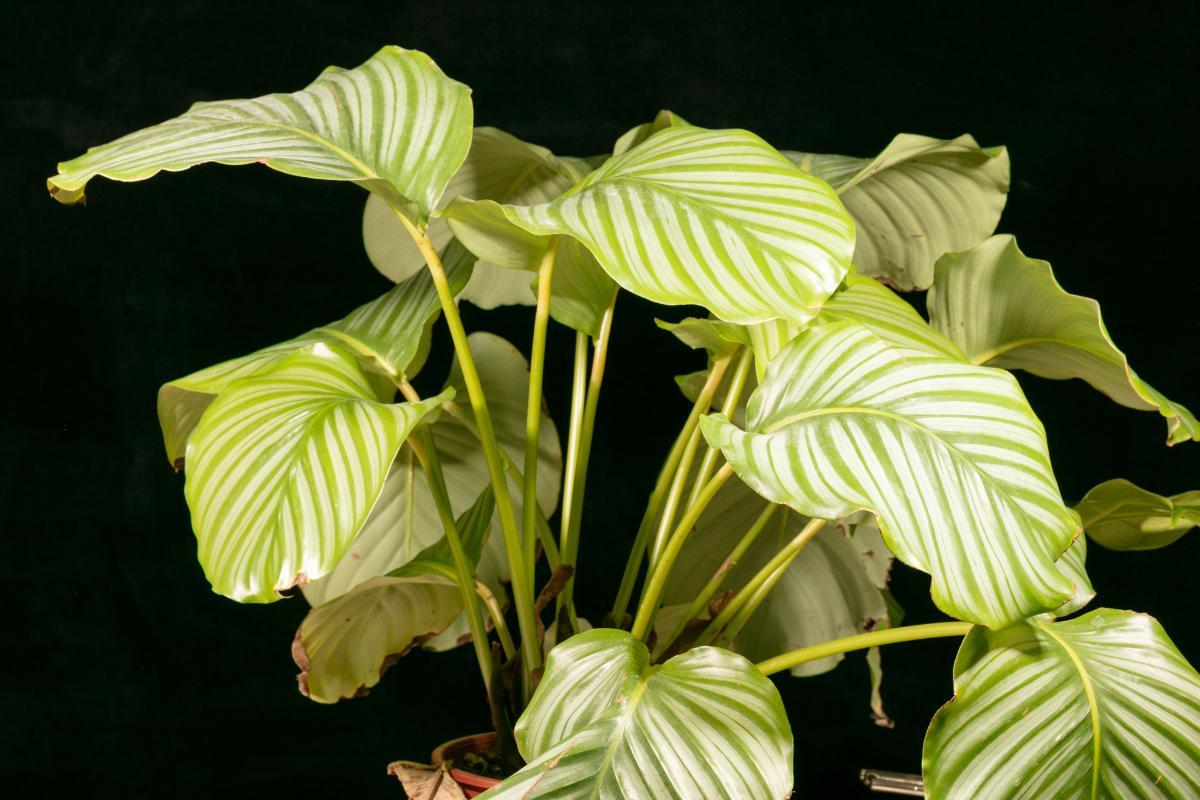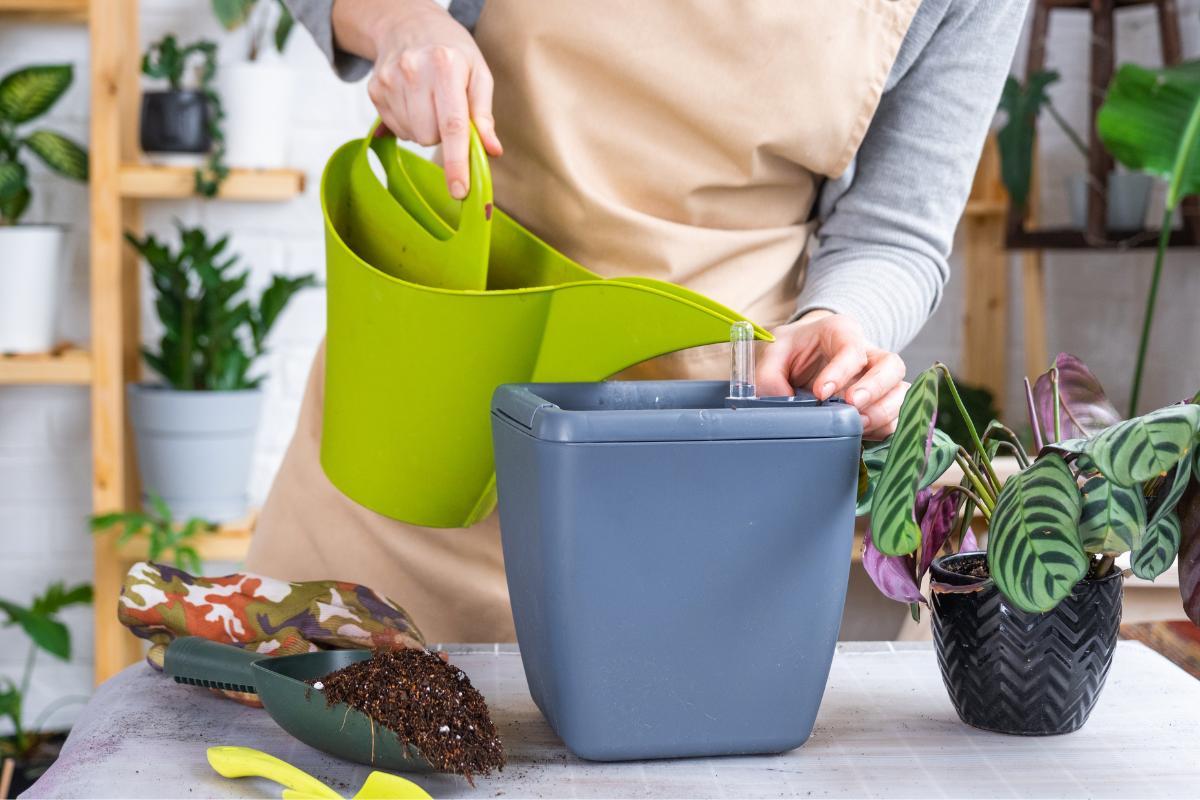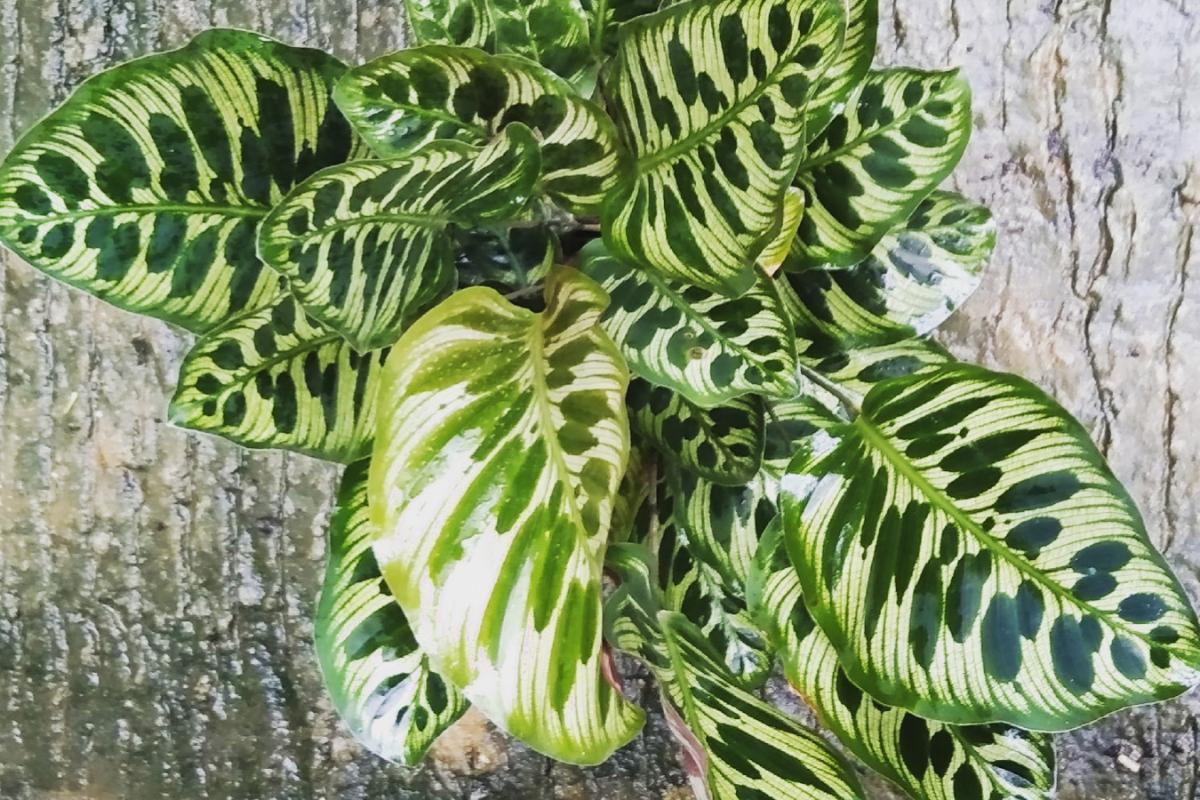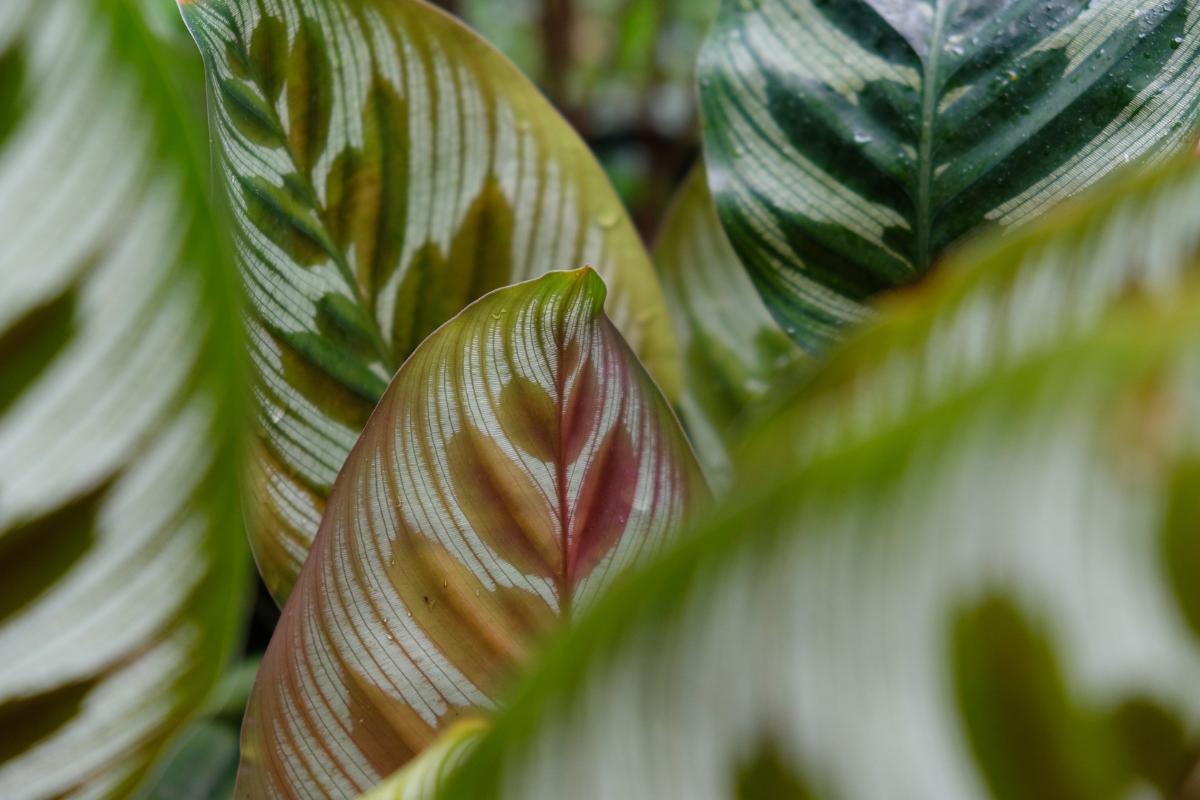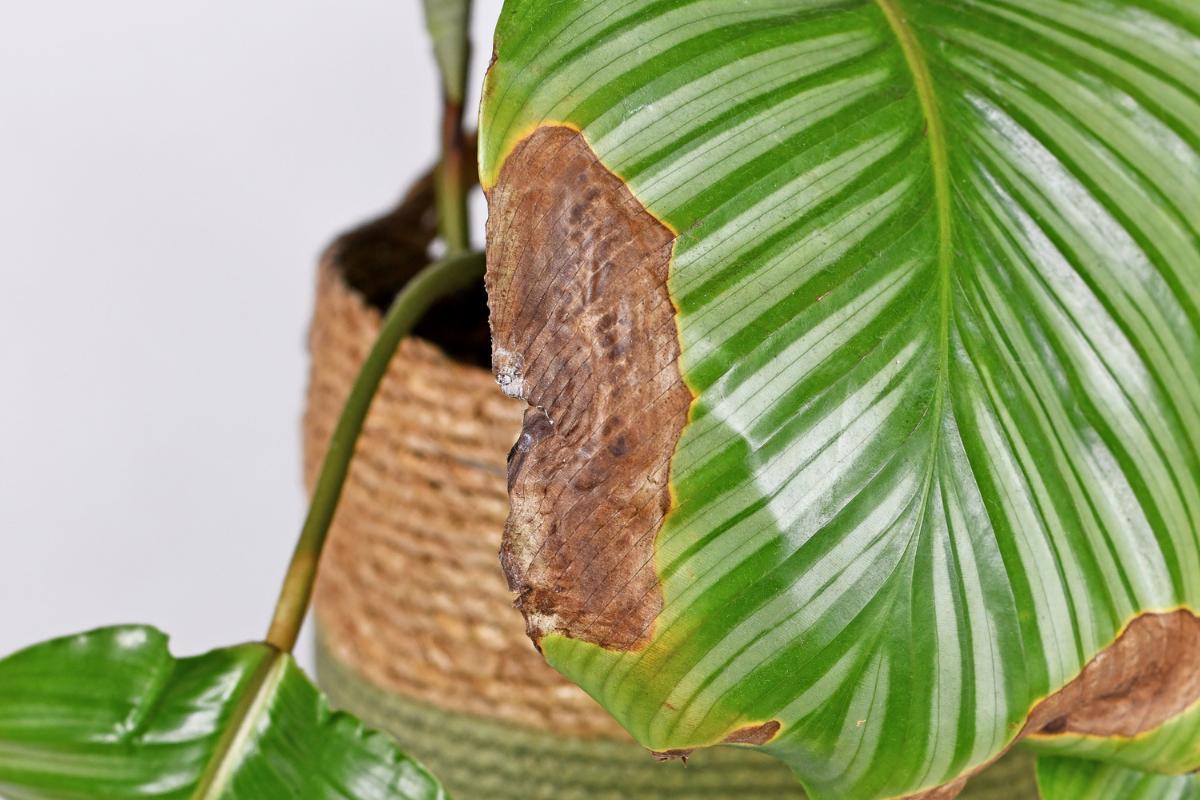My Calathea Has Yellow Leaves

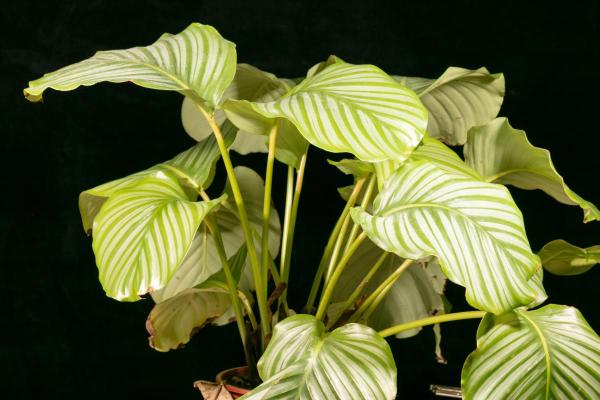
A calathea's leaves can have some yellow due to their variegation. When they are healthy, they will be bright and vibrant. They will be thick and sturdy to the touch. Calathea leaf color will vary depending on the species, but these characteristics should always be present with a healthy plant. When calathea leaves are turning yellow, when they were once green, we will see these characteristics change. The texture will become dry and brittle, they will not have the same structure and they will eventually start to fall off.
At thedailyECO, we discover why my calathea has yellow leaves. In addition to looking at the causes of this phenomenon, we find out how we can help the plant to recover. Doing so, we will see why the type of care we provide calathea plants is so important for keeping them healthy.
- Very dry soil
- Soil that does not retain moisture
- Lack of ambient humidity
- Overwatering
- Chlorinated water
- Direct light
- Low light
- Drafts
- Transplanting
- Lack of nutrients
- How to recover a calathea with yellow leaves
Very dry soil
Calathea are plants of tropical origin, meaning they require the soil to always be somewhat moist. This mimics the substrate of their natural habitat which includes types of rainforests. If you do not water them enough, the leaves will begin to curl, fall off and not close at night. When the leaves start turning yellow, this neglect means the plant is dying. First the leaf tips turn yellow, until they turn brown and finally the plant will die.
Remember to water as needed so that your plant always has a slightly moist substrate, but not one that is waterlogged. This will require soil and planters with proper drainage.
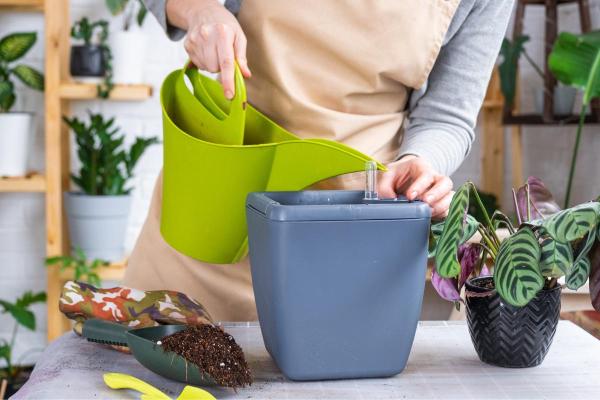
Soil that does not retain moisture
While the soil will need drainage to avoid it becoming waterlogged, it is also possible that the soil cannot retain enough moisture. If the soil is too dry or sandy, we will have keep watering it for the roots to absorb enough water. Otherwise, it can dry out very easily.
Vermiculite is a material that expands and retains water, releasing it as the substrate dries out. It is ideal for calathea because it helps remove or retain water, depending on the needs of the substrate and the plant. If you use this material, you will see that it will be easier to keep the soil well hydrated.
Discover the differences and benefits of vermiculate in comparison with perlite.
Lack of ambient humidity
Calatheas not only require good watering, but also good humidity in their environment. Calatheas close their leaves at night, something they do to avoid unnecessary water loss. In this regard, so you can understand how important it is to give them good humidity.
If there are air conditioners, stoves or heaters in the room, it can lower the ambient humidity by removing moisture from the air. Avoid exposing it to these devices that dry out the environment and remember to spray water on its leaves. Alternatively, you can put a plate with water and soil under the pot. This will allow it to absorb water incrementally. You may also want to purchase an electronic humidifier.
For rooms which are too humid, you may prefer to choose a plant that absorbs moisture.
Overwatering
Despite their high water demand, it is possible to overwater calatheas. This is also harmful to the plant. Calatheas are very sensitive to the amount of water in their soil. Excess water and waterlogging will lead to root rot. When their tissues are damaged, they will not be able to take in water, absorb nutrients or exchange gases. This irregularity will means your calathea has yellow leaves.
If this happens to you, replace the plant's substrate with fresh, dry soil. Wait a few days before watering it again. Also, cut off any rotten roots before repotting it.
Root rot is also a common disease of orchid plants.

Chlorinated water
We have already mentioned that calatheas are sensitive to the watering they are given. This is not only due to the quantity of water, but also to its quality. They are sensitive to the type of water used for their irrigation. If the irrigation water has chlorine or is too concentrated in salts, your calathea will suffer and their leaves may turn yellow. You should avoid using this type of water and only use bottled, filtered or settled rainwater.
Direct light
The calathea's natural environment is the jungle where it grows under the shade of the tree canopy above. This means it only receives indirect or very filtered light. If a calathea is placed somewhere with a lot of direct light, it is common for it to burn, dry out and its leaves turn yellow. The leaves are very delicate and should not receive too many hours of light per day. In addition, it is very important that the light they receive is indirect.
Low light
The fact that they are types of semi-shade or indoor plants does not mean that calatheas do not need some light. They certainly should not be kept in the dark. Their leaves require some light to be able to complete photosynthesis and for the leaves not to lose color and remain bright green. Place the calathea in a suitable place so that it receives some indirect light every day.
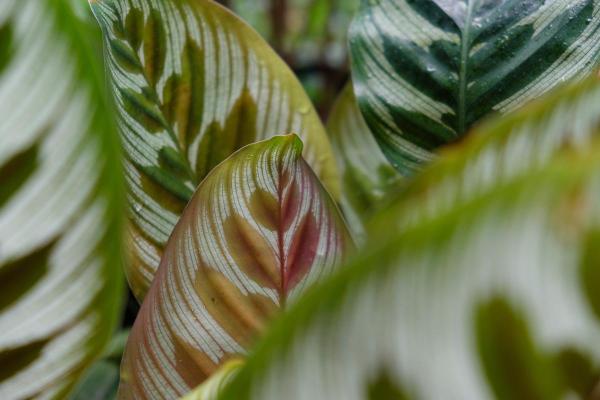
Drafts
If the calathea is placed near a window or door that is constantly opened and receives drafts, the leaves will start to turn yellow. It is a plant that is extremely sensitive to changes in its environment. Make sure to place it in somewhere there are no drafts or sudden changes in temperature. This means they need to be kept away from windows and doors that are opened regularly.
Transplanting
Calatheas do not like to be moved from one pot to another. They can be overly sensitive to the change. This can manifest with different symptoms, including yellow leaves. Repotting calathea is only advisable if it is absolutely necessary to improve their health.
Learn more about moving this plant to new pots with our article on peacock plant care and propagation.
Lack of nutrients
Yellow leaves can also be caused by a lack of nutrients. This is more common in plants that are several years old, because they have already used up the nutrients available in their pot. It is often due to an iron deficiency.
To improve this problem, you can add fertilizer to provide more nutrients. If you know for sure the yellow leaves are due to a lack of iron, you can add chelated iron or iron sulfate to its substrate.
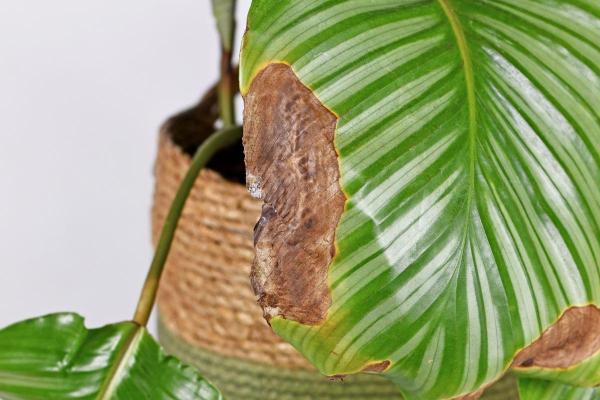
How to recover a calathea with yellow leaves
It is important to know that a plant with yellow leaves cannot be turned green again. However, you can recover the plant so new leaves can grow back after the yellow leaves are pruned. To help a calathea plant recover, you can:
- Schedule your calathea's watering schedule: this way, you won't miss out on frequency or forget to water it. The ideal amount is two-to-three times a week, making sure that the top centimeter is moist. This will help you avoid over-watering and under-watering.
- Check root health: if you have an overwatered plant, remove the plant from the pot and check the roots. If there are any parts that can be saved, cut off any that are damaged. Prepare a substrate made of equal parts peat, worm castings and coconut fiber, as well as a handful of vermiculite. Make sure the pot has holes to drain all excess water.
- Water: to improve water quality, leave the amount of water you will use for irrigation in an open container and allow the chlorine to evaporate at least 24 hours before using it. This will depend on the type of water you use.
- Improve ambient humidity: you can do this by placing a plate with pebbles and water on which you will place the pot. The water will evaporate around it. Another option is to spray the leaves with water. Also consider moving it to a place where there is more humidity and less light. Bathrooms with windows are excellent for this purpose.
- Fertilize the soil: add a universal liquid fertilizer in the growing season.
- Prune: once you have diagnosed the problem and fixed it, cut off any yellow or brown leaves. You'll soon have a fresh, new plant ready to grow strong. Now just make sure you give it proper care and be consistent.
Now that you know the causes of yellowing leaves in calathea and how to recover it, you may want to learn about the different types of calathea you can find.
If you want to read similar articles to My Calathea Has Yellow Leaves, we recommend you visit our Plant care and cultivation category.
Hinsdale, E.L.H. (2022). What Is My Plant Telling Me? An Illustrated Guide to Houseplants and How to Keep Them Alive. United States: S&S/Simon Element.



